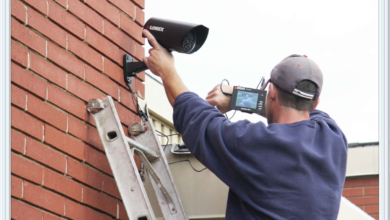
Smart grids are revolutionizing urban energy infrastructure across the United States, offering a dynamic solution to the growing demands for efficiency, sustainability, and reliability. Unlike traditional power grids, which operate on outdated, one-way electricity distribution models, smart grids integrate advanced digital technologies, real-time data analytics, and automated controls to optimize energy flow. American cities, facing increasing pressure from climate change, aging infrastructure, and rising energy consumption, are turning to smart grids as a transformative solution.
These intelligent networks not only reduce outages and energy waste but also seamlessly incorporate renewable energy sources, paving the way for a cleaner, more resilient future. As urbanization accelerates, the shift toward smart grids is no longer optional it is essential for modern, sustainable city living. Smart grids address these challenges by incorporating digital communication technologies that allow for real-time monitoring and adaptive energy management. By modernizing the grid, cities can improve resilience, reduce operational costs, and support the transition to renewable energy.
How Smart Grids Are Transforming American Cities
The Evolution of Energy Infrastructure in American Cities
The energy infrastructure in the United States has remained largely unchanged for decades, relying on centralized power plants and passive distribution systems. However, this model is increasingly strained by population growth, extreme weather events, and the rapid adoption of distributed energy resources like rooftop solar panels and electric vehicles. Traditional grids lack the flexibility to handle bidirectional energy flows, leading to inefficiencies and frequent blackouts.
Key Technologies Powering Smart Grids
The backbone of smart grids lies in their integration of cutting-edge technologies. Advanced metering infrastructure (AMI), for instance, replaces conventional meters with smart meters that provide real-time energy usage data to both utilities and consumers. This two-way communication enables dynamic pricing models and demand-response programs, encouraging energy conservation during peak hours. Additionally, IoT-enabled sensors detect faults and reroute power automatically, minimizing downtime.
Emerging innovations
Artificial intelligence and machine learning analyze consumption patterns to predict demand surges and optimize grid performance. Emerging innovations like blockchain are also being tested for peer-to-peer energy trading, allowing households with solar panels to sell excess power directly to neighbors. Together, these technologies create a more responsive, efficient, and self-healing energy network.
Benefits of Smart Grids for Urban Areas
The advantages of smart grids extend across economic, environmental, and social dimensions. One of the most significant benefits is enhanced reliability automated systems can detect and isolate faults in seconds, drastically reducing outage durations. Energy efficiency improves as smart grids minimize transmission losses and optimize load distribution. Similarly, Sacramento’s Municipal Utility District (SMUD) uses AI-driven analytics to forecast energy demand and optimize grid performance.
Challenges and Barriers to Implementation
Despite their promise, the widespread adoption of smart grids faces several obstacles. The high initial investment required for infrastructure upgrades is a major hurdle, particularly for municipalities with limited budgets. Cybersecurity risks also escalate as grids become more digitized, necessitating robust protections against hacking and data breaches. Regulatory frameworks often lag behind technological advancements, creating bureaucratic delays in deployment.
Public resistance
Public resistance, fueled by concerns over data privacy and the perceived complexity of smart meters, further complicates implementation. Addressing these challenges requires coordinated efforts among policymakers, utility companies, technology providers, and consumers to ensure a smooth and secure transition. These success stories highlight how smart grids can transform urban energy systems, offering valuable lessons for other cities considering modernization.
Systems Facilitate
Cities also experience environmental gains, as these systems facilitate the integration of wind, solar, and other renewable sources, reducing dependence on fossil fuels. For consumers, smart meters and mobile apps provide greater transparency and control over energy usage, leading to cost savings. Furthermore, smart grids support electric vehicle (EV) adoption by managing charging loads intelligently.
Smart Grid Success Stories in the U.S.
Several American cities have emerged as pioneers in smart grid adoption, demonstrating tangible benefits. In Austin, Texas, the implementation of a smart grid reduced outage times by 40% and improved the integration of renewable energy sources. Chattanooga, Tennessee, invested in a fiber-optic-enabled smart grid that not only enhanced reliability but also attracted tech companies seeking stable, high-speed infrastructure.
The Future of Smart Grids in Urban Development
The trajectory of smart grids points toward an increasingly interconnected and intelligent energy ecosystem. As electric vehicle adoption surges, smart grids will play a crucial role in managing charging stations and preventing grid strain. Microgrids localized, self-sufficient energy networks will complement central grids, ensuring power continuity during emergencies.
Battery Storage Technology
Advances in battery storage technology will enable cities to store excess renewable energy for use during peak demand periods. Policymakers must prioritize funding, streamline regulations, and foster public-private partnerships to accelerate deployment. Ultimately, smart grids will serve as the foundation for smart cities, driving energy independence, sustainability, and economic growth.
Reducing Outages & Boosting Renewables
Austin Energy’s smart grid deployment has cut power outage durations by 40% through real-time fault detection and self-healing circuits. The system also integrates over 1,000 MW of renewable energy, helping the city achieve its 65% clean energy target by 2027. Smart meters and dynamic pricing empower consumers to reduce peak demand by 15%. Austin Energy’s smart grid uses automated switches that isolate outages.
Fiber-Optic Powered Reliability
Chattanooga’s EPB leveraged a federally funded smart grid with fiber-optic connectivity to achieve 99.99% reliability reducing outages by 60%. The grid’s automation reroutes power in milliseconds during disruptions. This infrastructure also enabled the nation’s first citywide 10-gig internet service, attracting $2.7 billion in tech investments, reroute power in seconds, reducing outage durations by 40%.
AI-Driven Demand Forecasting
The Sacramento Municipal Utility District (SMUD) uses AI to predict energy demand with 95% accuracy, optimizing grid performance and reducing costs. Their smart grid supports 600+ EV charging stations and community solar programs, cutting CO₂ emissions by 1.2 million tons annually.
Read More: Step-by-Step: How to Set Up a Secure Smart Home
Conclusion
Smart grids represent a fundamental shift in how American cities generate, distribute, and consume energy. By leveraging digital innovation, these systems enhance efficiency, reduce emissions, and empower consumers with real-time data. While challenges such as high costs and cybersecurity risks persist, the long-term benefits improved reliability, environmental sustainability, and economic savings make smart grids an indispensable component of urban infrastructure.
As more cities embrace smart grids, the collective impact will be profound. From minimizing blackouts to accelerating the transition to renewable energy, smart grids are laying the groundwork for a smarter, greener future. The transformation is already underway, and its potential to reshape urban living is limitless, preventing grid overloads during peak demand.
FAQs
What is a smart grid?
A smart grid is an advanced electricity network that uses digital technology, sensors, and real-time data to optimize energy distribution, improve reliability, and integrate renewable sources.
How do smart grids benefit consumers?
Consumers gain lower energy costs, fewer outages, and greater control over usage through smart meters and demand-response programs that adjust consumption during peak times.
Are smart grids secure from cyber threats?
While digitization increases vulnerability, utilities employ advanced encryption, AI monitoring, and blockchain to safeguard against cyberattacks.
Which U.S. cities are leading in smart grid adoption?
Austin, Chattanooga, and Sacramento are among the pioneers, showcasing improved efficiency, renewable integration, and reduced outages.
Will smart grids support renewable energy growth?
Yes, smart grids enable seamless incorporation of solar, wind, and other renewables by balancing supply and demand in real time.











